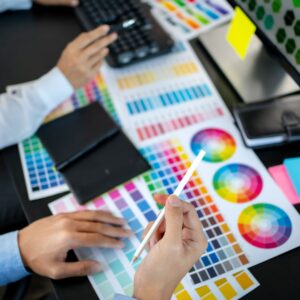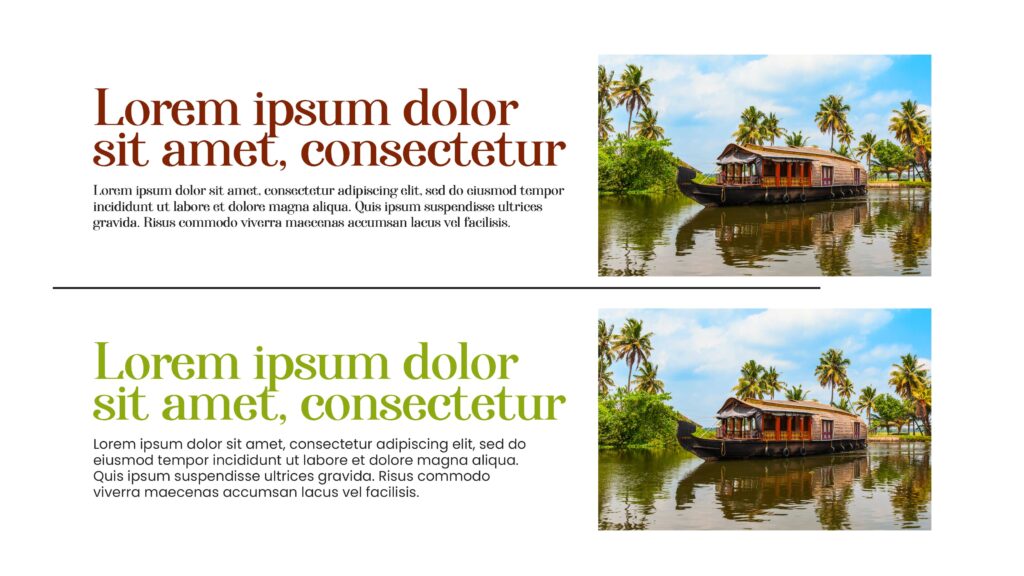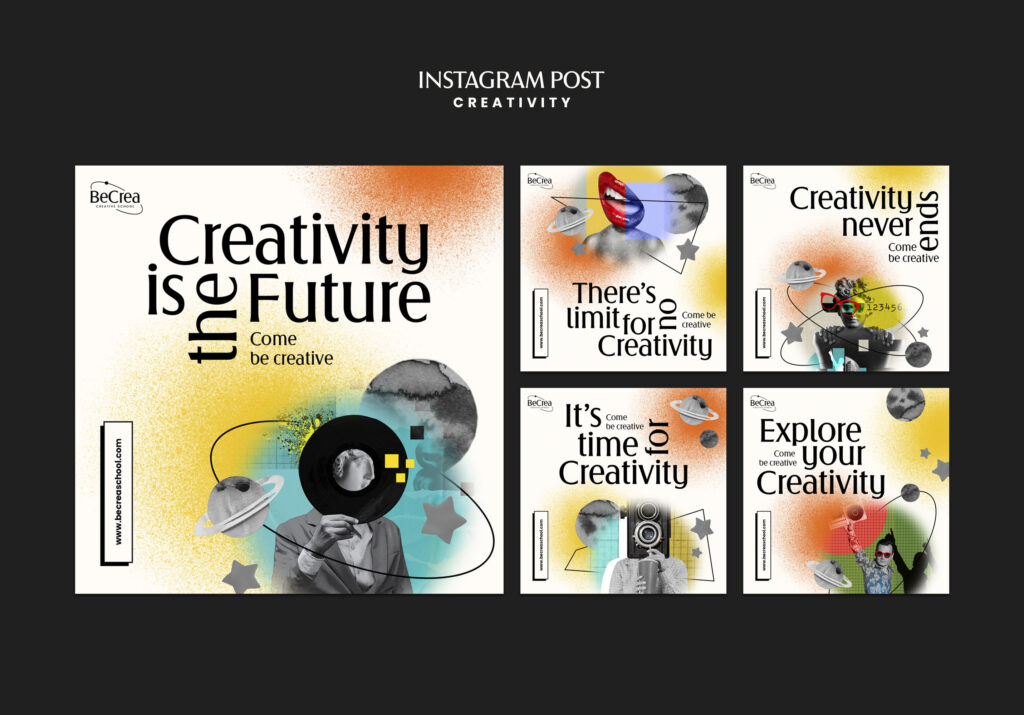What is Graphic Design?
Basic Definition:“Communicating with peoples with the help of some infographic element, visuals, images & texts is commonly comes under the Graphic Design”.
But what does it really mean, what is design?
Design – An interactive way to communicate & solve the daily usage problems, where language is not so mandatory. In our daily basis if we see around us, we are shaped and build with designs. If your problem is city chaos, you have a solution to spend some time in “Natures Village Design” where its elements are trees, beautiful sun shines and sun sets, flow of freshwater rivers, fountains which can definitely help you to find peace & restart you & your body. Your transportation problems are solving by “Moto Designs” like cars, buses, vehicles. There is architectural design for your other problems. Some are created and crafted by God some are made by humans.
Now moving one step further when you start communicating with the help of graphics it will termed as “Graphic Design”.
Understand it with an example like see this picture (Image 1.1)

Fig 1.1
Let’s suppose you are in a waiting room and you see this image 1.1, it itself sufficient to convey this that you are not allowed to smoke here. This is very very common example of graphic design message conveying in same way if you will roam around you will see various sign boards on road many hoardings where brands are passing their message as advertisement. On social Media pages like Instagram & Facebook there are so many posts you will see where brands are advertising themselves with their personal brandings elements like their typography & color which represents them to increase their sales & somehow this Graphic Design helping those brands to solve their problems of marketing.
Now as we used word brands personal visual representation (Typography & Color) what doses it mean?
So Every Graphic Design must follow some of the fundamentals of design.
Fundamentals of Graphic Design:
A Complete design called to those design which stands on both parameters it should be Visually Appealing & Easily Understandable.
Now to make a design presentable we use various graphic elements it includes:
- Geometric Shapes
- Colours
- Typography
- Images
Using only these elements you can make the best designs. Its not important that in a single design only you use all these things. You have to understand that which design requires which element similar to the cooking, to make the best dish you do not put all the available ingredients of your kitchen into your dish. You first thinks that what you going to cook and then you choose the right ingredients for it and then using the proper amount of ingredients you add into dish to cook and putting the right quantity is also important because using of unbalanced ingredients will unbalance the taste of your food, in exactly same way if the elements of design will not be in balanced way your design will definitely not look visually appealing.
1. Geometric Shapes:
As we discussed earlier about fundamentals significant in our design, geometric shapes are one of the important need of design.
The type of shape you want to use is depend on your design requirement. It could be the 60% of your design or may be just a touch of it. You can use shapes in various ways like for image placement or for make a part in your design like to separate one element with another.
The default shapes most of the software will provides are:
- Rectangle
- Line
- Ellipse
- Rounded Rectangle
Most demanded softwares like Adobe Photoshop provides feature of making custom shapes also, which can be very helpful in graphic design. You can use shapes to create visual hierarchy of your design with the help of colours.
2. Colour:
Colours are the crucial part of your design. It hold many potentials like it can be your brand identity. You can choose 1 colour pallet of 3 to 4 different colours whose consistent use can increase trust of customers and familiarity of your product on your business. Colours plays psychologically also with customers like every colour hold an emotion, red showing boldness, anger, trust, etc., green showing freshness, healthy, etc.. So, for a brand choosing a colour for their brand is very important and its designer’s responsibility is to help brand with a colour by understanding their business goals, product and target audience.

Colours can also help you to make visual hierarchy combining it with either shapes or in texts.
To understand more about colours, one should read and learn about colour theory to get one level high towards graphic designing.
3. Typography:
Either to reflect your brand identity or to reflect the mood and tone of your design typography is the most crucial part of your design. One of the most important way to establish communication between your design and the customer. Similar to colour, consistent use of same kind of typo throughout your design will build familiarity with your brand. For typography one should have knowledge about the various typefaces.
There are various types of fonts, they are:
- Serif
- Sans-serif
- Handwriting/Freestyle
- Display
- Monospace
Using correct way of font weight, colour, font size, line lengths helps to improve users/customers readability & accessibility.

4. Images:
Images are also important in your design because this is something which is going to be noticed in first view. So for a designer its very important to understand image and its message before using it in design. In a product business image will be the most crucial part of designs because before reading or getting familiar with colour the customer is going to interact with the image.
Now it’s not important that you have to use all these fundamental in your single design but random combinations of it or using all of them in your particular design can only help you to make a perfect design.
To achieve the main goal of Graphic Design a designer have to follow this fundamental and also have to adhere the principles of design, which is mainly a set of guidelines
These principle includes:
- Balance and Alignment
- Contrast and Emphasis
- Proportion and Scale
- Unity and Harmony
Balance and Alignment
- Think of balance as the art of keeping your design from tipping over! It’s all about distributing elements (text, images, shapes) so nothing feels too heavy on one side.
- Alignment is like setting things up in neat rows or lines so your design feels organized and easy to read. It makes everything look put-together!
Contrast and Emphasis
- Contrast makes certain parts of your design “pop” by using differences in color, size, or shape. Imagine a bright yellow button on a dark background—it instantly grabs attention!
- Emphasis is highlighting what’s most important. It’s like shining a spotlight on the main message so your audience knows where to focus first.
Proportion and Scale
- Proportion is about getting the sizes of objects just right—making sure a tree doesn’t look smaller than a flower! It keeps things realistic and visually pleasing.
- Scale, on the other hand, is used to create drama. Big, bold text at the top of a page? That’s scale making an impact.
Unity and Harmony
- Unity means all parts of your design feel connected, like they belong together in one big, happy family. This can be achieved through consistent colors, fonts, or themes.
- Harmony makes sure nothing feels out of place, so every part of your design works together smoothly. It’s like a band playing in sync—everything flows perfectly.
Who is Graphic Designer?
A person who helps the businesses to make their identity as a brand in the market & helps them to stand out from the crowd, are truly called a graphic designer.
A graphic designer will have to get updated from the new designs & market trends including all the fundamentals & principles of graphic design we have discussed earlier.
Graphic Designer’s – Jobs in design.
Graphic Designing is the root of various design from graphic design we have its various different nodes like: Logo Design, Packaging Design, UI/UX Design, Motion Graphic Design, Print Media Designs including- Brochure, Flyer, Visiting Cards or Product Packaging gift card etc..
All these different firms of designs get designed by graphic designers and collectively these designs established an identity for a brand.
Understanding it with a small example that you are a graphic designer working in company’s manufacturing unit you will be responsible for brochure/catalogue/flyer design and in the same company you are working for their social media your job will be to design different posts like any digital poster design for advertisement any motion graphic for promotions of any event or product launch.
As a graphic designer working in social media, your role involves creating engaging digital posters, motion graphics for promotions, and event or product launch designs. Here’s an example:

Which tools used by Graphic Designers?
Tools can be mainly designer’s personal choice because end of the day only a proper design matters which is including fundamentals & principal and able to convey the message which a brand is passing. But there are some of the market hero softwares like Adobe Photoshop, Adobe Illustrator, Adobe Premiere Pro. Then there is some more platforms like Canva, Photopea etc..

Nice Article
Good Information 🙌🏻